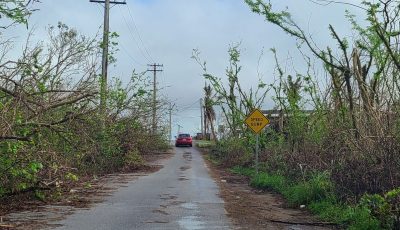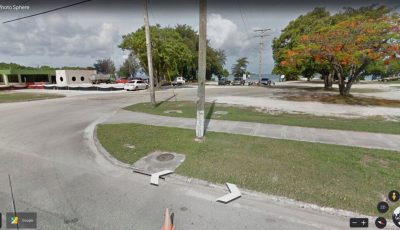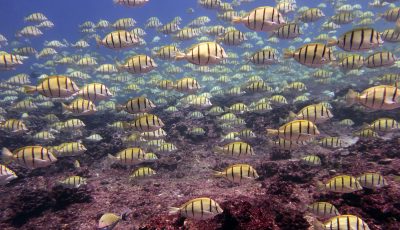DLNR successfully tags 400-lb green sea turtle
A 400-lb green sea turtle was successfully tagged by the Department of Land and Natural Resources Wednesday night, soon after it laid its nest of eggs on a beach in the northern part of Saipan
Employees of the DLNR sea turtle program glued a satellite tag on the back of the creature, which measured 103.6 centimeters (40.79 inches) long from nose to tail and 80.7 centimeters (31.77 inches) wide. It was so big that its back was a little over a yard wide.
The satellite tag on her shell will help scientists keep track of her movements in the months ahead.
The local turtle program gave the turtle the name Raraina-Wong. “Raraina” translates to queen in Chamorro, while “Wong” means green turtle in Carolinian.
Upon Raraina-Wong’s release at about 11pm, she crawled back to the Pacific Ocean.
Tammy Summers, a National Oceanic and Atmospheric Administration contract biologist working at DLNR, said they tagged her after she finished laying eggs.
It was confirmed that Raraina-Wong laid 130 eggs.
Green sea turtles lay seven nests a year on average. They return to their original nesting sites every two to six years.
Student members of the Environmental and Natural Resource Organization at the Northern Marianas College participated in the tagging activity, joining DLNR’s Jessy Hapdei and two Division of Fish and Wildlife enforcement officers, John Tagabuel and Frank Rasa.
Summers said that Raraina-Wong is at least 35 years old but may be as old as 50 years old based on her size. She said this was the first time they have ever tagged her on Saipan.
The satellite tags are radio transmitters that send signals to satellites orbiting Earth. Information from the satellites is then relayed to computers via the ARGOS system. Scientists then plot tracks and produce maps showing the migration routes of each tagged turtle, which is done by NOAA.
Satellite tagging provides immediate and detailed information on turtle movements, dive time, and water temperature, showing the actual route taken to foraging areas by turtles after nesting.
This is the third turtle to be tagged this season, according to Summers. She noted that one went to the Philippines and the other went to Okinawa, Japan.
NOAA has provided the DLNR sea turtle program with a total of 10 tags.
“We’re partnering with NOAA-Honolulu and Pacific Islands Fisheries Science Center. They are the ones purchasing the satellite tags and doing the mapping and tracking. Our staff is out on the field and attaching and deploying these devices on the animal,” Summers said.
She was excited about having the students participate because it is part of the sea turtle program’s mission to reach out to the community and try to inspire them to become the next stewards of the CNMI environment.
Jolly Ann Cruz, president NMC-ENRO, said she and her fellow ENRO members were happy to have seen the turtle and that they enjoyed the experience.
Tagabuel touched on enforcement issues, saying that citizens who encounter illegal activities concerning sea turtles should contact them at 989-6092. Their role during the tagging was to prevent people from disturbing the sea turtle while it was nesting.
Summers said that NOAA scientists are currently setting up the transmitter and mapping the sea turtle and her route can be monitored at www.seaturtle.org.
To report sick, injured, or dead turtles, call 287-8537 or CTRTLES.



























